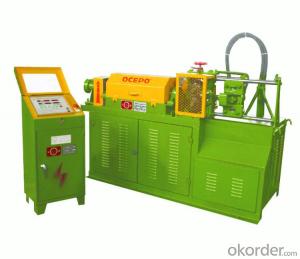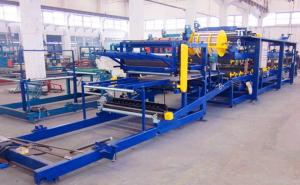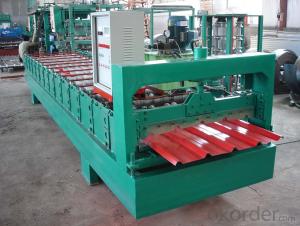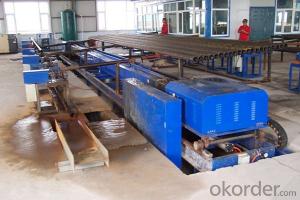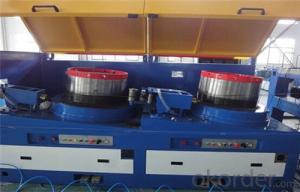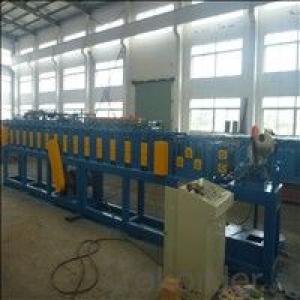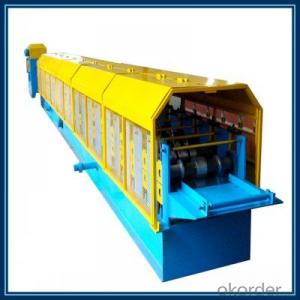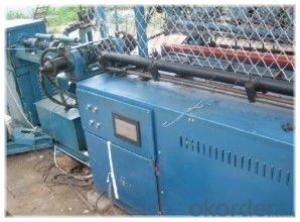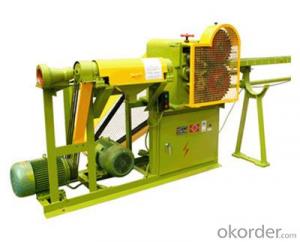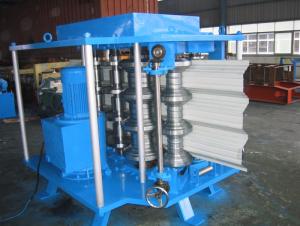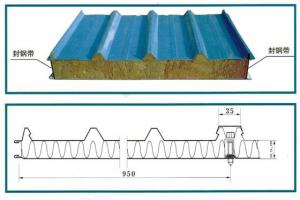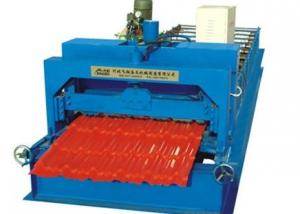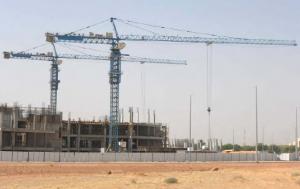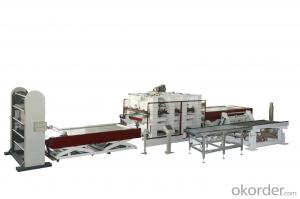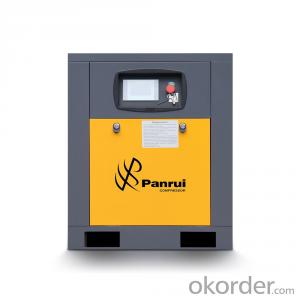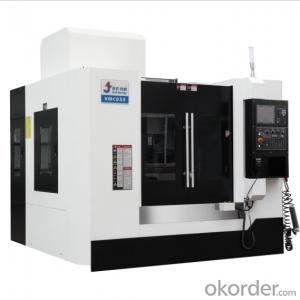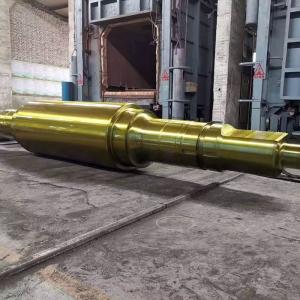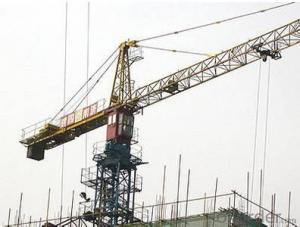CNC machine,Rebar Straightening and Cutting Machine
- Loading Port:
- Tianjin
- Payment Terms:
- TT OR LC
- Min Order Qty:
- 1 unit
- Supply Capability:
- 200 unit/month
OKorder Service Pledge
OKorder Financial Service
You Might Also Like
CNC machine,Rebar Straightening and Cutting Machine
Specification
Straightening Round Bar Dia.
Φ4-Φ12mm
Auto Cutting Length
500-8000mm
Straightening Speed
45m/min
Electromotor for Straightening
Model
Y132M-4
Rated power
7.5Kw
Electromotor for Cutting
Model
Y100L2-4
Rated Power
3.0Kw
Application
The machine is used to straighten and cut round bar (steel rod).
Advantage
1. Numerical control: automatic straightening and cutting, and save labors
2. Smart size and space saving
3. Easy to operate, with fast speed
4. Low material loss
5. Hydraulic cutting, have low noise
Payment
T/T L/C
Delivery
Within one week
Origin
China
Minimum Order
1 set
Packaging
Plywood case
Remarks
OEM & ODM, Buyer Label can be provided.
Packing
Plywood Case
Payment
T/T L/C
Delivery
Within one week
Origin
China
Minimum Order
1 set
Packaging
Plywood case
Remarks
OEM & ODM, Buyer Label can be provided.
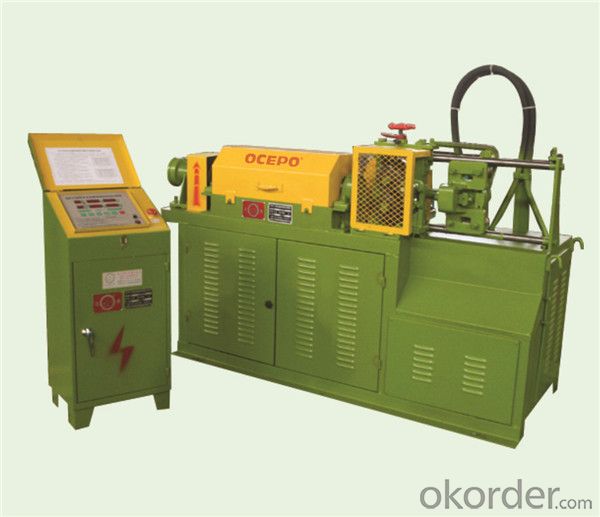
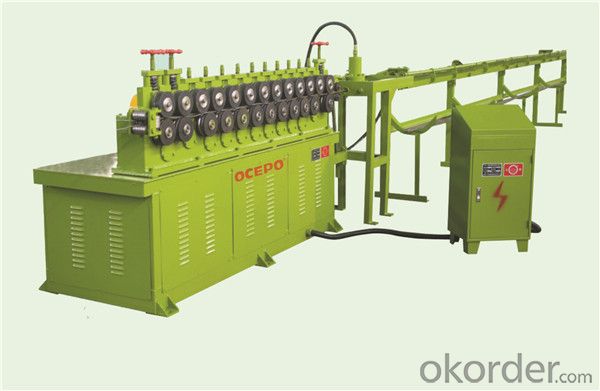
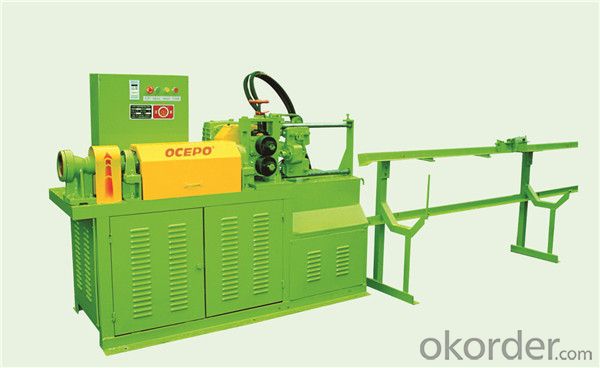
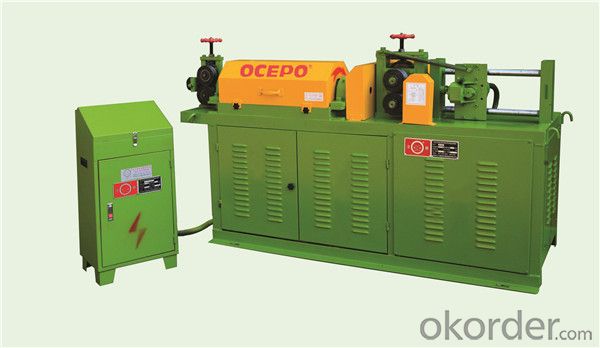
Company Direction
We are China professional manufacturer and system solutions provider of rebar connection machines,rebar processing machines and small road machines.
Founded in the 1990s. For 20 years, it has been focusing on the research, production and sales of rebar connection machines and rebar processing machines. The company is located in the capital of China - Beijing, has strong technical force, complete processing equipment and testing means. All the products are optimized by microcomputer design to reach the advanced level of industry.
- Q:Can metal straightening machinery be used for pipes and tubes?
- Yes, metal straightening machinery can be used for pipes and tubes. These machines are designed to straighten and correct any bends, deformations, or misalignments in metal objects, including pipes and tubes. They use various techniques such as hydraulic or mechanical processes to apply controlled pressure and force, ensuring the straightening of pipes and tubes to meet required specifications.
- Q:Does this machinery have any built-in features for detecting and correcting material bowing?
- Indeed, this machinery boasts built-in capabilities to detect and rectify material bowing. It is outfitted with sensors that diligently detect any deviations or bowing in the processed material. Upon detecting such bowing, the machinery's system promptly readjusts the settings to rectify the deviation and guarantee precise processing of the material. This invaluable feature safeguards the material's desired form and dimensions, effectively averting any potential defects or inefficiencies in the production process.
- Q:Can metal straightening machinery be used for both small and large cross-section materials?
- Yes, metal straightening machinery can be used for both small and large cross-section materials. Metal straightening machinery is designed to accommodate various sizes and shapes of metal materials. It typically consists of adjustable rollers or dies that can be customized to match the specific dimensions of the material being straightened. This allows the machinery to handle a wide range of cross-section sizes, from small rods or wires to large beams or plates. Additionally, some metal straightening machinery may have adjustable settings or multiple sets of rollers to cater to different material sizes effectively. Therefore, whether the material is small or large in cross-section, metal straightening machinery can be adjusted and used to straighten and align it accurately.
- Q:Can this machinery be used for straightening metal with varying thicknesses along its length?
- Yes, this machinery can be used for straightening metal with varying thicknesses along its length.
- Q:What is the noise level of metal straightening machinery?
- The noise level of metal straightening machinery can vary depending on several factors such as the type of machinery, its size, and the specific operations being performed. Generally, metal straightening machinery can produce high levels of noise due to the mechanical processes involved, including the movement of metal parts and the operation of motors and gears. These machines often produce continuous or intermittent loud sounds, which can range from around 80 decibels (dB) to over 100 dB. It is important to note that prolonged exposure to high noise levels can have detrimental effects on hearing health, so it is crucial to implement proper safety measures such as wearing ear protection when working with metal straightening machinery to mitigate any potential risks.
- Q:Is there any software or control system integrated into the machinery?
- Most modern machinery is equipped with software or control systems that serve the purpose of automating and managing different aspects of their operations. These systems aid in monitoring and optimizing performance, regulating processes, ensuring safety, and facilitating remote control or monitoring. The specific software or control systems can differ depending on the machinery type, but they commonly incorporate features like sensors, actuators, programmable logic controllers (PLCs), human-machine interfaces (HMIs), and software algorithms. In essence, integrating software or control systems into machinery not only improves efficiency, accuracy, and productivity but also simplifies maintenance and troubleshooting tasks.
- Q:Can metal straightening machinery be used on different types of metals?
- Yes, metal straightening machinery can be used on different types of metals. Metal straightening machinery is designed to straighten and align metal components or structures that have become deformed or bent due to various reasons such as manufacturing processes, accidents, or wear and tear. These machines typically use hydraulic or mechanical forces to apply pressure and manipulate the metal back into its original shape. Different types of metals have different properties, such as hardness, ductility, and malleability. Therefore, the machinery needs to be adjusted or calibrated accordingly to ensure effective straightening without damaging the metal. The operator of the machinery must have knowledge and experience in working with different types of metals to determine the appropriate settings and techniques for each specific metal. Some common types of metals that can be straightened using metal straightening machinery include steel, aluminum, copper, brass, titanium, and various alloys. Whether it is a large structural beam, a metal tube, or a small metal component, metal straightening machinery can be adapted to handle a wide range of metals and sizes. It is important to note that while metal straightening machinery can be used on different types of metals, it is crucial to follow the manufacturer's guidelines and recommendations to ensure safe and efficient operation. Additionally, certain metals may require special considerations due to their unique properties, so consulting with experts or manufacturers may be necessary in some cases.
- Q:Can metal straightening machinery be used for delicate or sensitive materials?
- Robust and sturdy materials like steel or iron are usually handled by metal straightening machinery. These machines exert significant force and pressure to straighten or reshape metal components. However, it is generally not advisable to use this machinery for delicate or sensitive materials such as thin aluminum sheets or precious metals. Delicate materials are more susceptible to deformation or damage when subjected to excessive force or pressure. Metal straightening machinery can apply excessive force, resulting in bending, warping, or tearing. Furthermore, the design of this machinery may not be suitable for delicate materials as it is primarily meant for heavy-duty applications. For delicate or sensitive materials, it is recommended to utilize specialized equipment specifically designed for such materials. These machines typically have adjustable pressure settings, precise controls, and softer tooling to minimize the risk of damage. Additionally, manual or hand-operated methods may be employed to ensure gentle handling and precise straightening. In conclusion, metal straightening machinery is not ideal for delicate or sensitive materials due to the potential for damage. It is crucial to employ specialized equipment and techniques tailored to handle such materials in order to maintain their integrity and preserve their quality.
- Q:Is there any software or control system integrated into the machinery?
- Yes, there is software and control systems integrated into the machinery for efficient operation, monitoring, and control of various processes.
- Q:How does metal straightening machinery handle different levels of hardness?
- Metal straightening machinery handles different levels of hardness by applying different levels of pressure and force. The machinery is designed with adjustable settings, such as hydraulic pressure and speed, to accommodate different hardness levels of metal. This allows the machinery to effectively straighten and shape various types of metals, ranging from softer ones like aluminum to harder ones like steel. Additionally, the machinery may incorporate heating elements or cooling systems to further facilitate the straightening process for metals with different levels of hardness.
1. Manufacturer Overview |
|
|---|---|
| Location | |
| Year Established | |
| Annual Output Value | |
| Main Markets | |
| Company Certifications | |
2. Manufacturer Certificates |
|
|---|---|
| a) Certification Name | |
| Range | |
| Reference | |
| Validity Period | |
3. Manufacturer Capability |
|
|---|---|
| a)Trade Capacity | |
| Nearest Port | |
| Export Percentage | |
| No.of Employees in Trade Department | |
| Language Spoken: | |
| b)Factory Information | |
| Factory Size: | |
| No. of Production Lines | |
| Contract Manufacturing | |
| Product Price Range | |
Send your message to us
CNC machine,Rebar Straightening and Cutting Machine
- Loading Port:
- Tianjin
- Payment Terms:
- TT OR LC
- Min Order Qty:
- 1 unit
- Supply Capability:
- 200 unit/month
OKorder Service Pledge
OKorder Financial Service
Similar products
New products
Hot products
Related keywords
